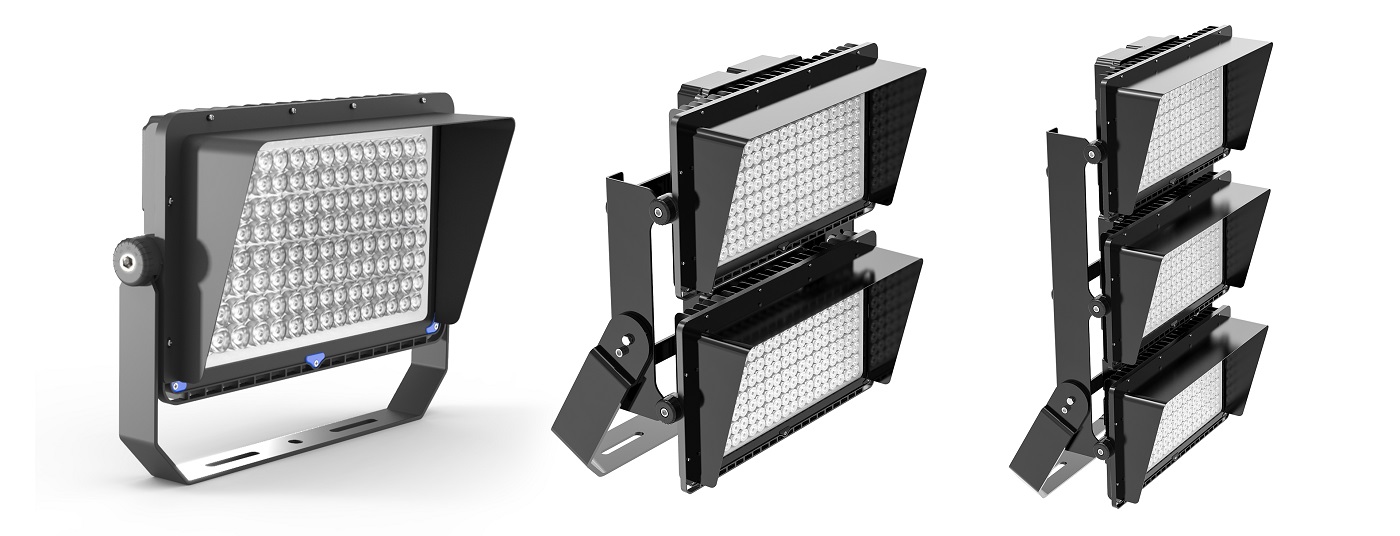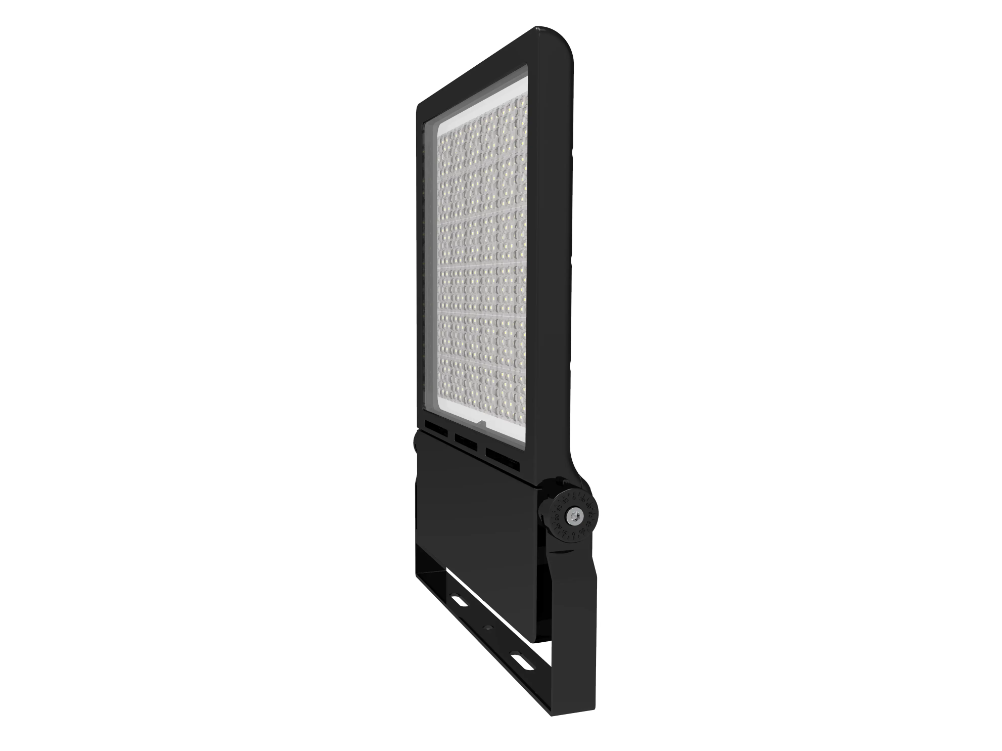Artificial illumination of sports facilities, such as padel court, is governed and controlled by the rules and regulations for the sport. Lighting requirements for different competition categories, and the positioning of light fixtures to prevent glare are just a few examples. Floodlights using the latest LED technology have become more popular than traditional spotlights because they are more durable and efficient.
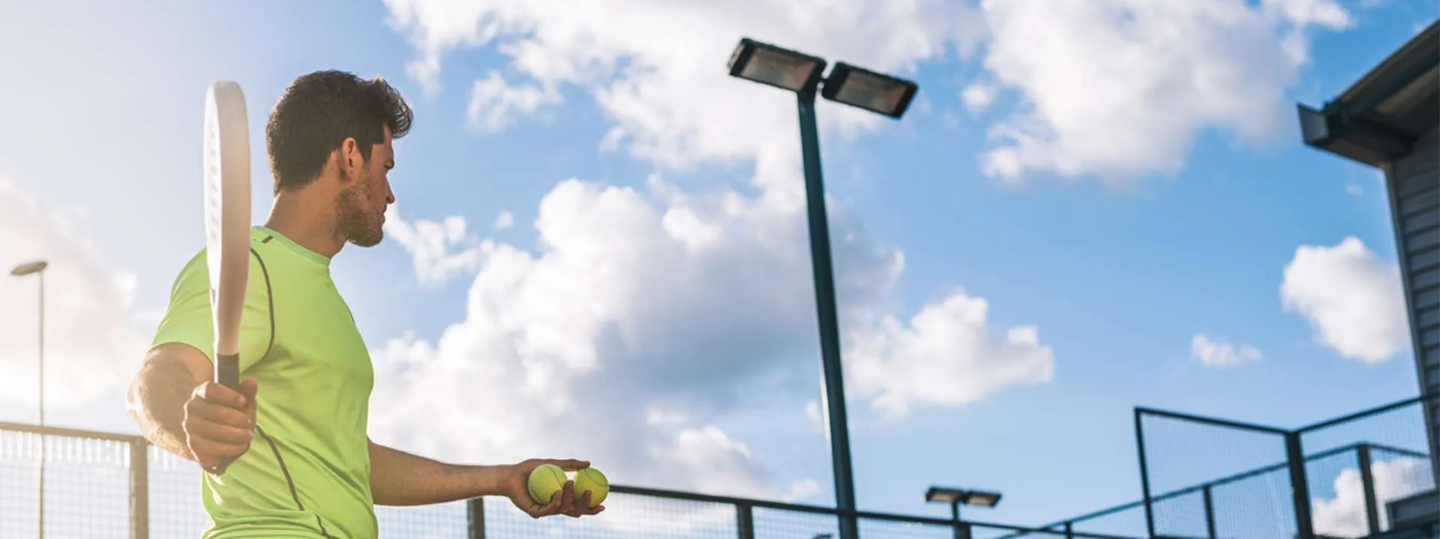
Our LED sports lighting for padel courts comply with national and internationally recognized standards
The high-colour rendering ensures that players, officials and spectators are able to see the ball no matter how fast or slow it moves.
Deliver high uniformity by distributing light evenly across the surface of the playing field so that there are no dark areas or shadows.
Direct the light onto the court in order to reduce the light spillage for the local neighborhood and biodiversity.
Reduce costs with low energy consumption, and durable materials that guarantee a long life.
Easy installation is possible; We can offer a variety of LED lighting options for padel court depending on your competition level and infrastructure.
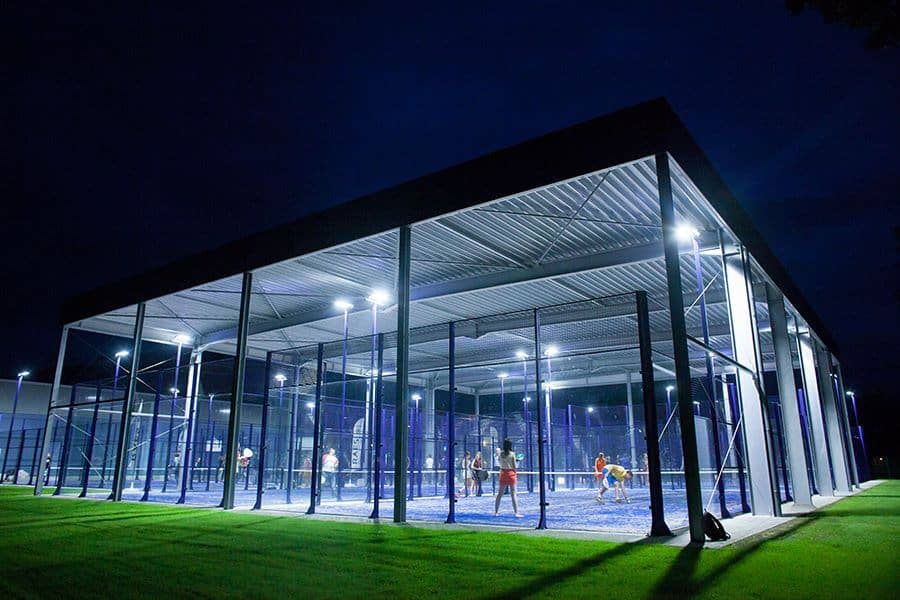
Current regulations and factors to consider
To ensure that players and spectators can see the ball clearly, a good source of illumination is required on regulation courts. The illumination should be uniform and avoid glare, and it must be placed so that the vision of players, officials, and spectators is not impaired. The goal is to provide comfort and convenience for players and officials, as well as the best conditions possible for matches.
Padel courts require a certain degree of horizontal lighting, which is measured in Lux or the amount of light per sq m.
Lighting for padel courts based on the illumination requirements
Illumination requirements for regulation padel court are not the same. The choice of light fixture depends on which competition categories or sports a court will be used for and the corresponding regulatory standards that must be followed. Regulation UNE-EN 12193 Lighting Sports Facilities’ divides this type of illumination into three categories based upon different competition categories. It also differentiates between indoor courts and outdoor courts.
The regulations set minimum lighting levels for the court, including colour rendering (measured in Lumens) and uniformity.
Lighting of Category 1
Courts where top-level national and international competitions are played. These courts have very high lighting requirements and must take into consideration a large number of spectators watching matches from afar. Outdoor courts must have a minimum of 500 Lx and 70% uniformity. Indoor courts are illuminated at 750 Lx on average with 70% uniformity.
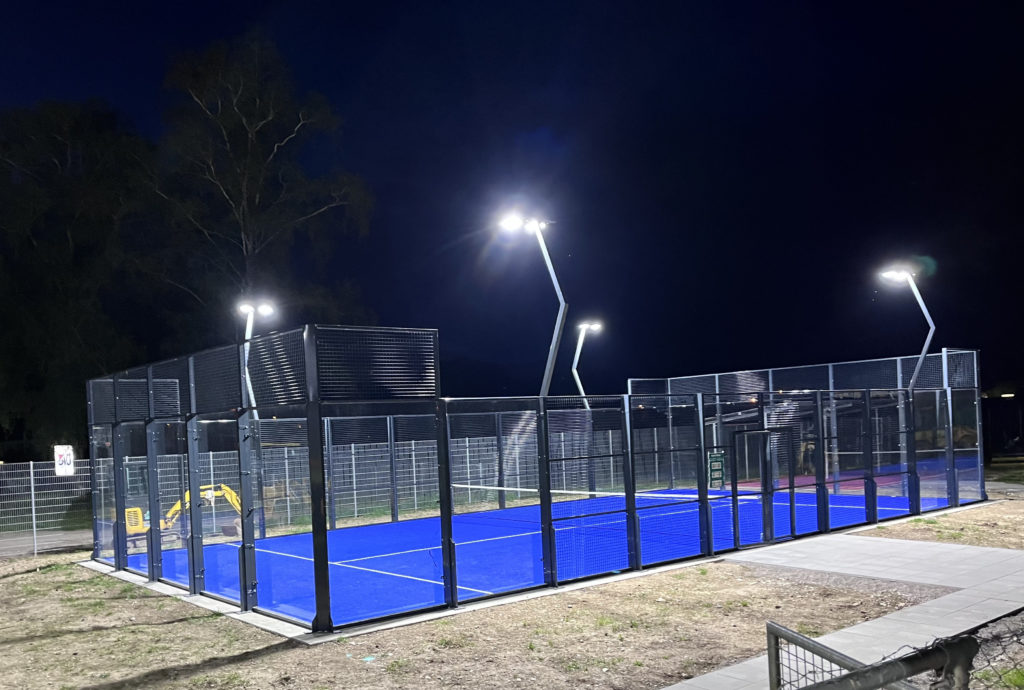
Lighting for Category 2
This category includes regional or local competitions. This legislation recommends that outdoor courts have a minimum level of illumination of 300 Lux and 70% uniformity. For indoor facilities, the required illumination is 500 Lx and 70% uniformity.
Lighting for Category 3
This category includes courts that are used for school, training and recreational purposes. Outdoor courts must have a minimum of 200 Lx and 50% uniformity. Indoor facilities must have a minimum horizontal illumination of 300 Lx and 50% uniformity.
The regulations require a minimum of 1,000 Lumen Per Watt for vertical illumination when padel matches or videos are broadcasted on television, or audiovisual devices are used. This can even be higher depending on the situation.
Lighting projects must also take into consideration the type, quantity and orientation of lighting fixtures, as specified in the relevant legislation. It is recommended that light installations consist of four posts at least six metres high, each fitted with two floodlights or spotlights.
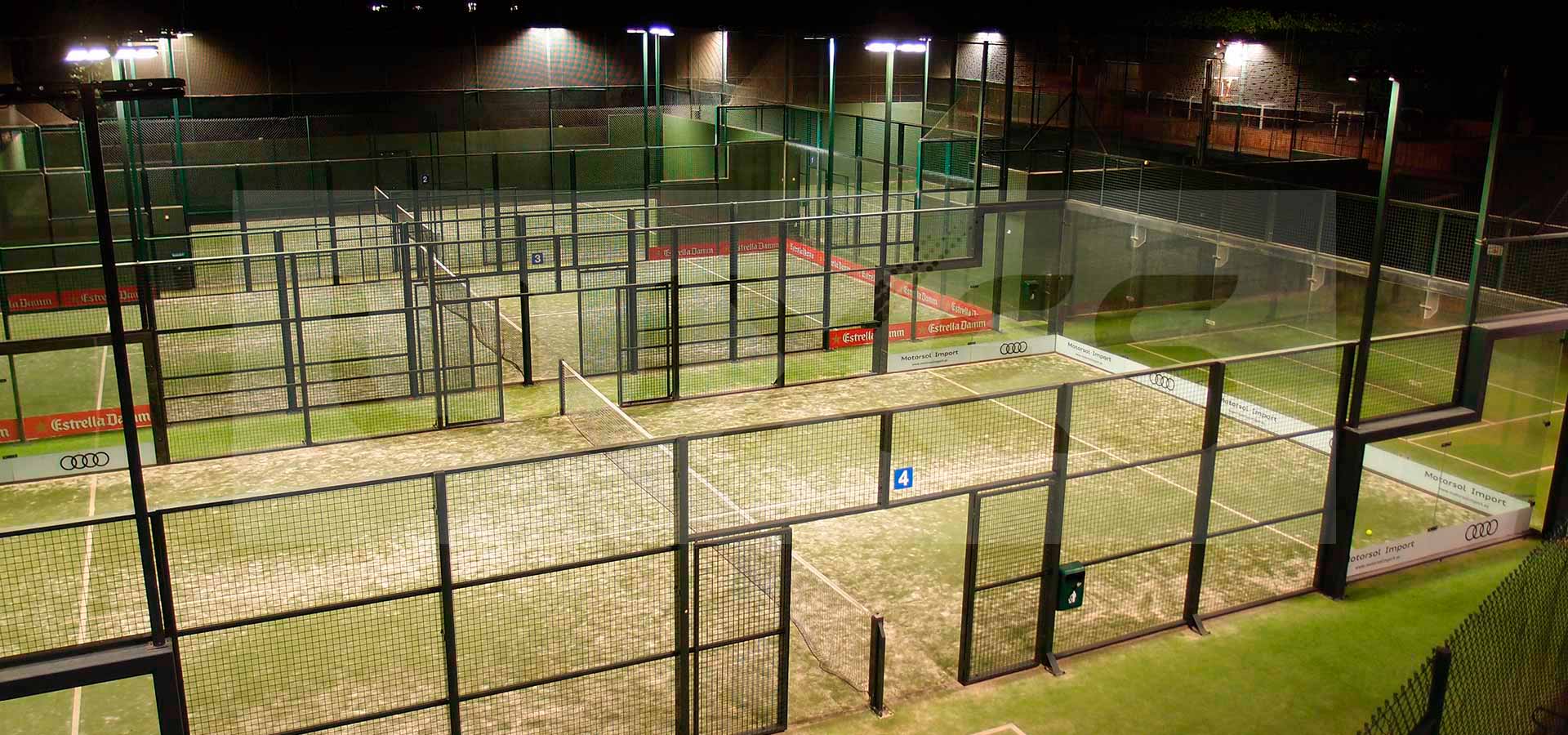
Light fixtures with high-tech features and recommended
In addition to the different lighting requirements for padel courts, depending on their classification, light fixtures must also meet certain technical requirements to ensure optimal conditions of play. Orientation is important to avoid glare, for example. Padel is an extremely fast sport, so the lighting levels and trajectory of light on the balls or players must be precise.
It is therefore recommended to use spotlights and flooding lights with asymmetrical lenses that can reduce glare. These lights minimise glare to the maximum, allowing players to see the trajectory of the balls without losing visibility. To avoid this type of glare, these light fixtures shouldn’t be installed on the ceiling above courts.
Due to their numerous advantages, LED light fixtures are more popular for lighting padel courts than halogen spotlights. They also have lower maintenance costs.
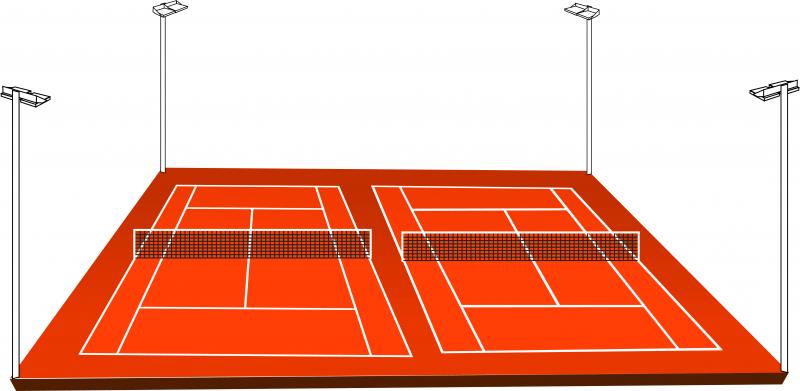
They reduce energy consumption by a considerable amount. LED floodlights can save you between 50 to 70% compared to halogen spotlights.
These light fixtures can also be used to maximise the time spent on court, as they are switched on instantly. They also emit a limited amount of heat, making them ideal for indoor courts with limited space. The investment is very cost-effective and quickly repaid, plus they are guaranteed to last a long time.
The Nari & Roza series is a great option. These light fixtures are equipped with advanced LED technology, which optimises the distribution of light. They can be used for broadcasting events. They can meet all lighting requirements with their different lenses. Their innovative design allows them to be placed in the exact right spot using individual pivotable modules. The 30deg. 60deg. 90deg. and asymmetrical lenses guarantee perfect performance and have an estimated life span of 60,000 hours.
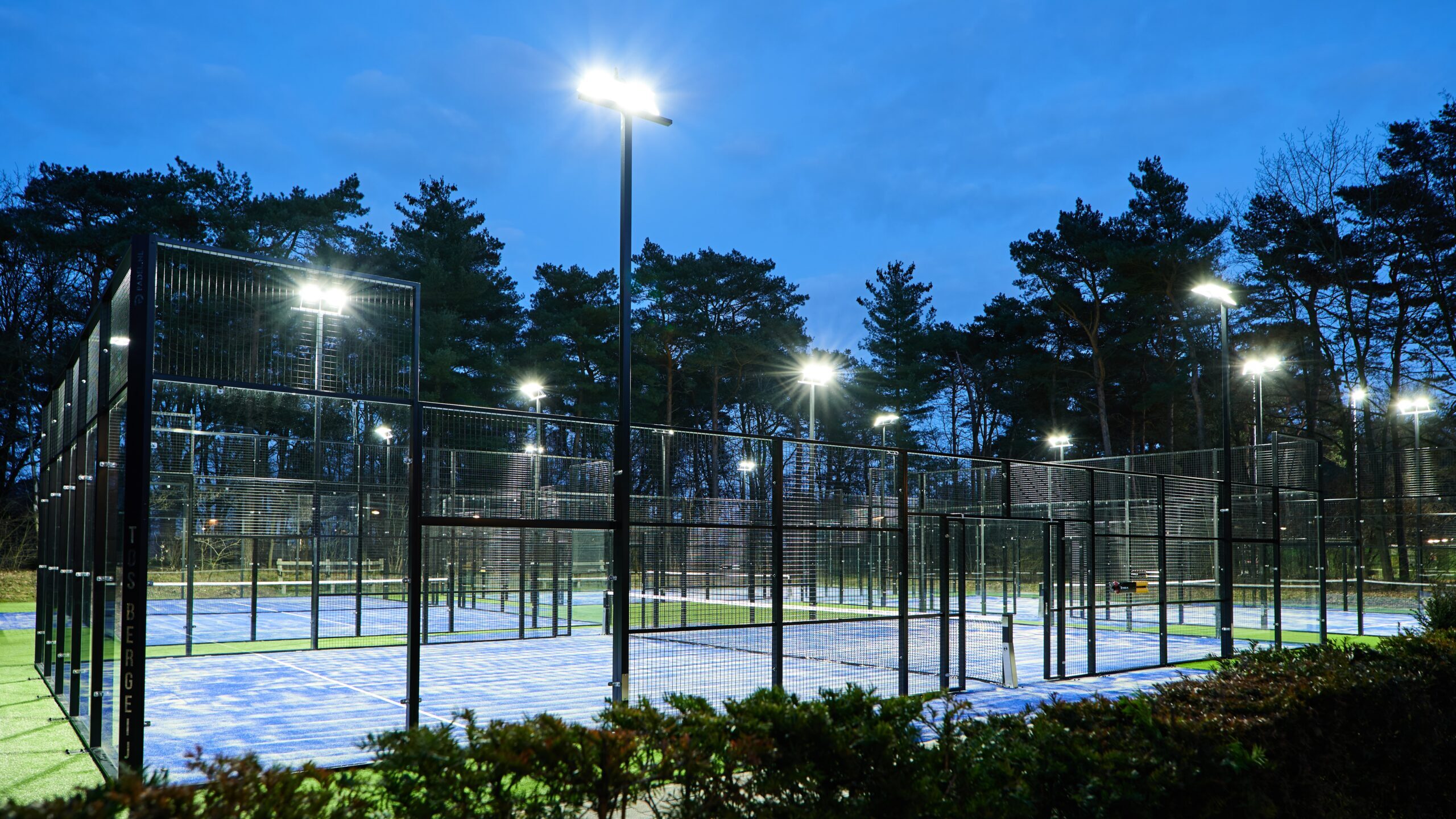
Post time: Apr-18-2023

